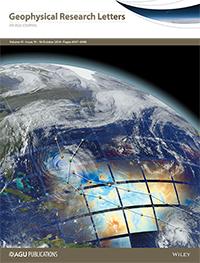Powerful Brakes Applied by Cyclones’ Cold Wakes
It’s an oceanic case of sibling rivalry. Large, first-born cyclones drink in most of the ocean's warmth, leaving cold water leftovers for sibling storms that cross its path. Pacific Northwest National Laboratory and collaborators from the National Oceanic and Atmospheric Administration found that cyclones’ rate of intensity slows when they interact with residual cold wakes from previous cyclones. Results show that this process occurs often enough to change the mean intensification rate for cyclones in the world’s major cyclone development areas. The research was featured on the cover of Geophysical Research Letters.
“When a cyclone’s path crosses the cold wake of a recent storm, it throws a cold, wet blanket on the following storm’s strength,” said Dr. Karthik Balaguru, lead author and oceanographer at PNNL. “Our research shows that this occurrence may reduce mean cyclone intensification rates in a hurricane season by as much as 12 to 15 percent during the most active storm-developing years.”
Cyclones need heat and moisture to bolster their power, and they pull it from an ocean which stores heat absorbed from sunlight. As the climate warms, ocean temperatures rise—welcome news if you’re a cyclone. Many studies project increased tropical cyclone activity in a warming climate. Results from this study show the importance of accurately representing the upper ocean’s vertical mixing processes as current climate models may not capture an important self-regulating mechanism of cyclone-cyclone interactions. Knowing a cyclone’s force in advance would also be a boon to populations that reside in its path.
“Understanding this interaction, and its role in modulating cyclone intensity, will be important for predicting changes to the tropical cyclone system in a warmer climate,” said Dr. L. Ruby Leung, PNNL atmospheric scientist and corresponding author.

